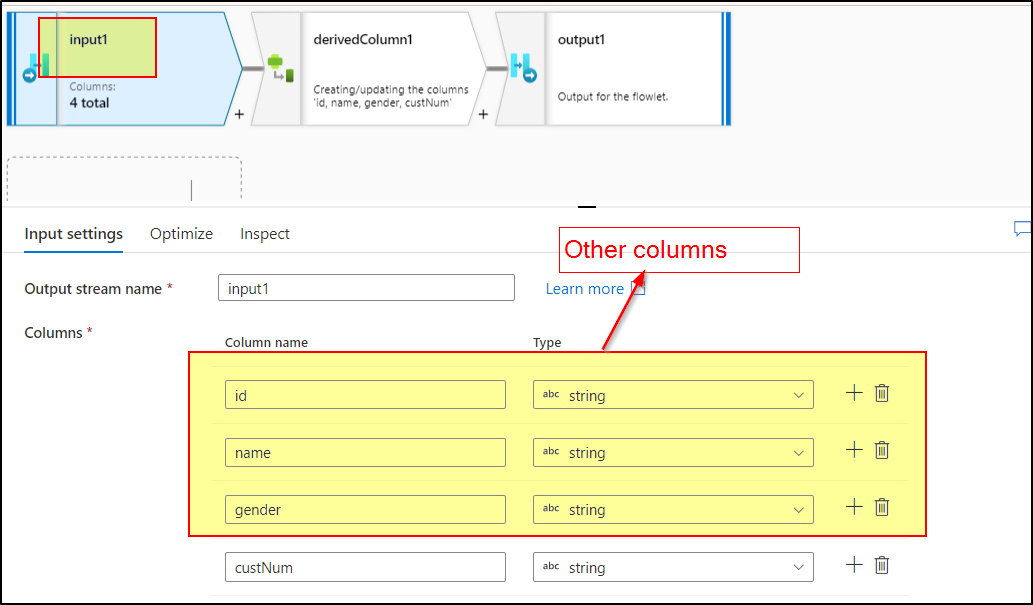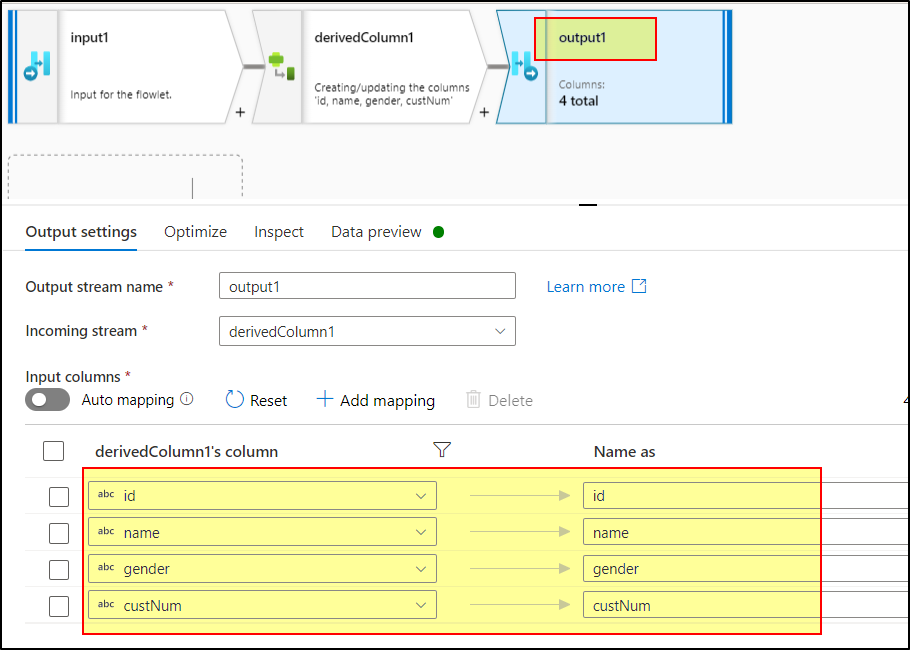Hi @Marc van der Wielen ,
Thank you for follow up ask with details.
Flowlets in ADF will need to supply all the columns as input to work. If we don't supply then it is going to return only one column always.
For example, lets as Source1 has columns A,B,C and Source2 has columns B,M,N. Then if we want flow let to work for both the sources we should consider adding input columns as A,B,C,M,N.
Below is an idea which I have on high to avoid adding all source columns to flowlet. Kindly check its feasible in your case.
Step1: Create a Flowlet with only customerNumber column as input.
Step2: Inside dataflow on source transformation use New Branch transformation to clone source as sperate branch OR add another source transformation with same source data.
Step3: On source transformation use Select transformation to get take only customerNumber column.
Step4: Add Flowlet transformation after select transformation.
Step5: From Flowlet transformation try to join columns between both paths(step2 & step3)
Please Note, make sure have a common column between source and new branch, so that we can easily join as mentioned in Step5.
Below screenshot shows high level implementation suggested.

Hope this helps. Please let us know if any further queries.
------------------
Please consider hitting Accept Answer button. Accepted answers helps community as well.

 and upvote
and upvote  for the same. And, if you have any further query do let us know.
for the same. And, if you have any further query do let us know. 
